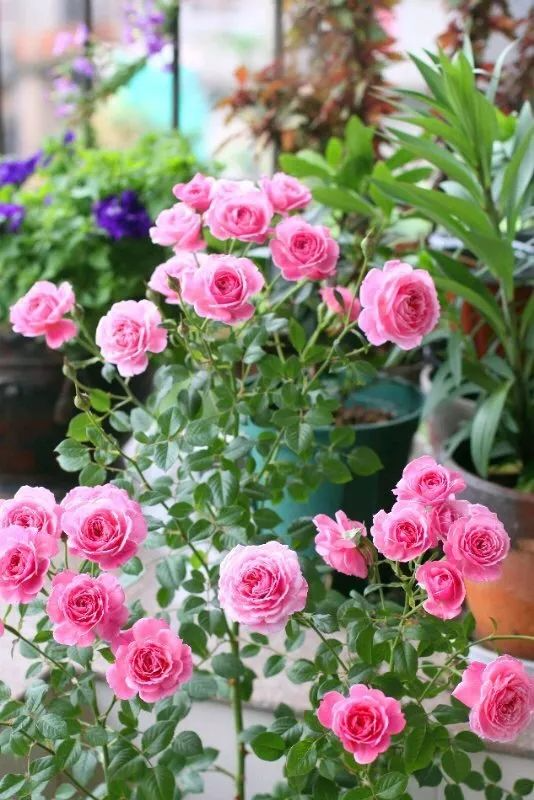The beauty of climbing roses lies mostly in their shaping. Here is a traction technique to make your windowsill look like a waterfall.
[How to grow roses in balcony pots] series
PART 11
Growing roses in autumn and winter: pruning and pulling of mature vine varieties
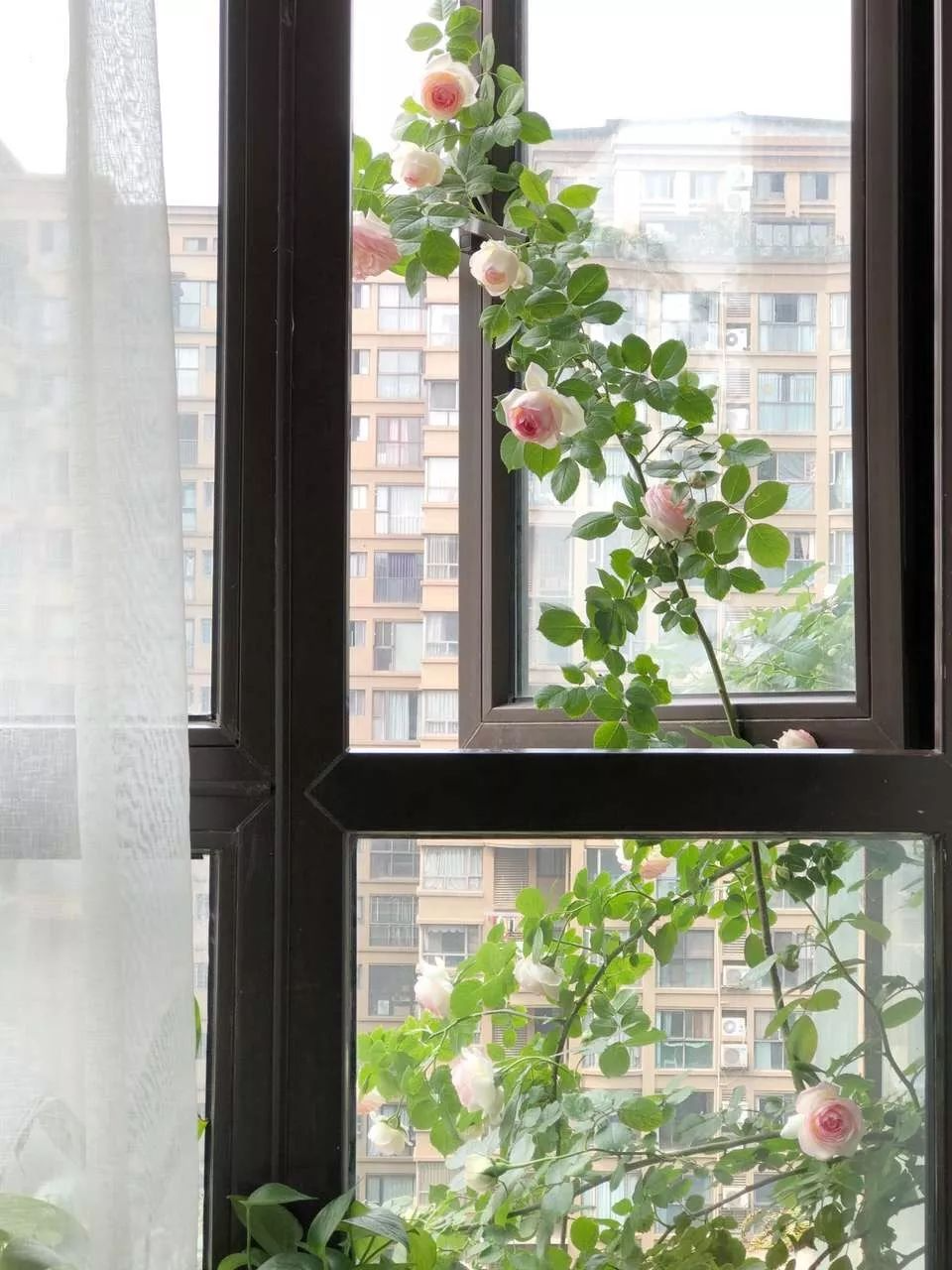
There are two types of vines:
One is the shoot renewal type where shoots (shoots) are emitted from the base;
One is the non-shoot renewal type in which the branches become thicker every year.
The former requires that all branches be unfixed, old branches be cut off and new branches be pulled; the latter, since no or few branches are produced, the old branches are usually not released and kept in their original state.
Important tip from the director: For potted plants with small traction space, non-spindle renewal type is more suitable. This article also takes this type as an example to introduce.
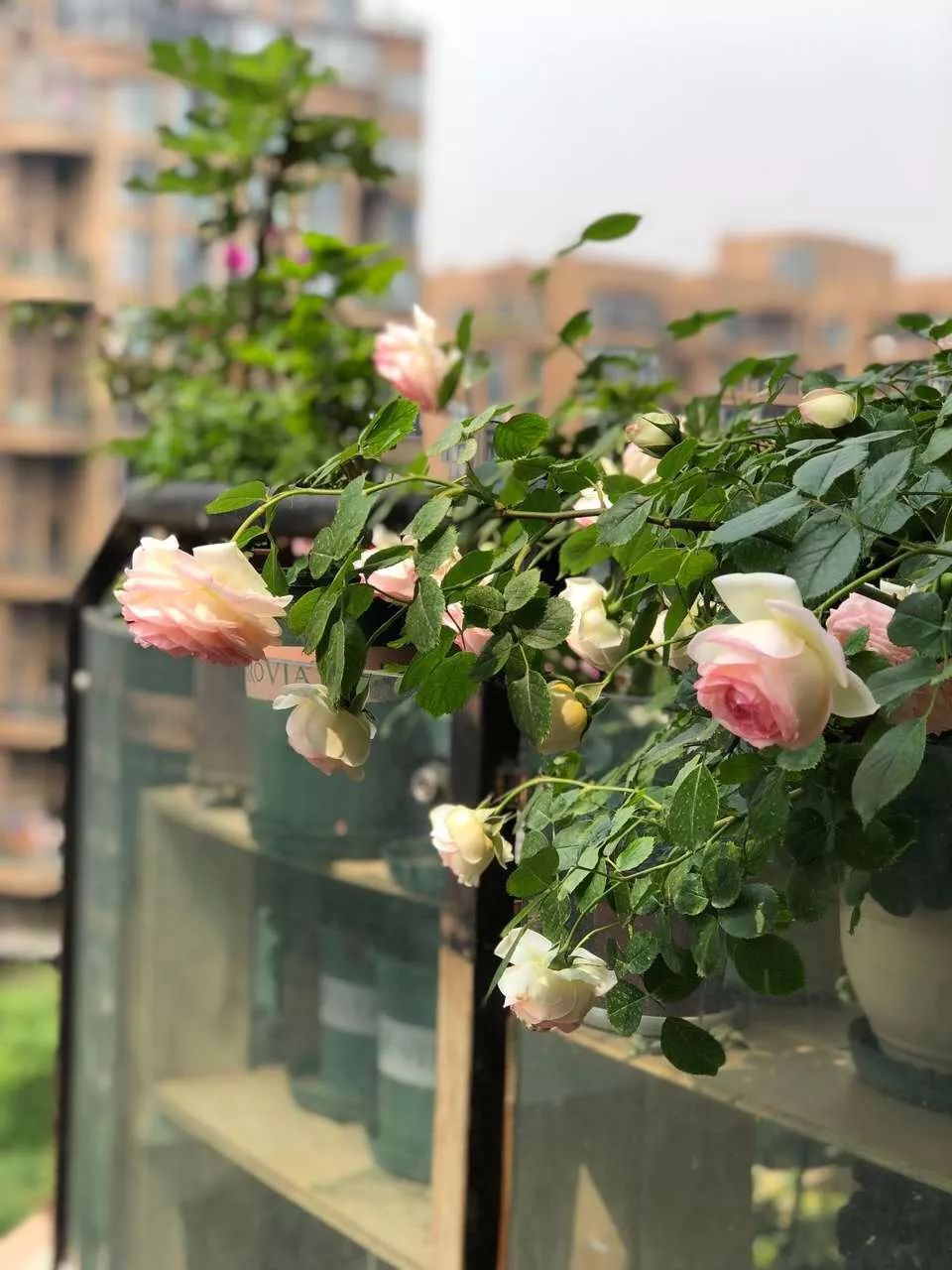
Fujimoto Tsuki
Items for mowing and pulling preparation
·Vine varieties of potted flowers
Support (two U-shaped brackets are used here)
Hemp rope (or plastic rope)
·Scissors
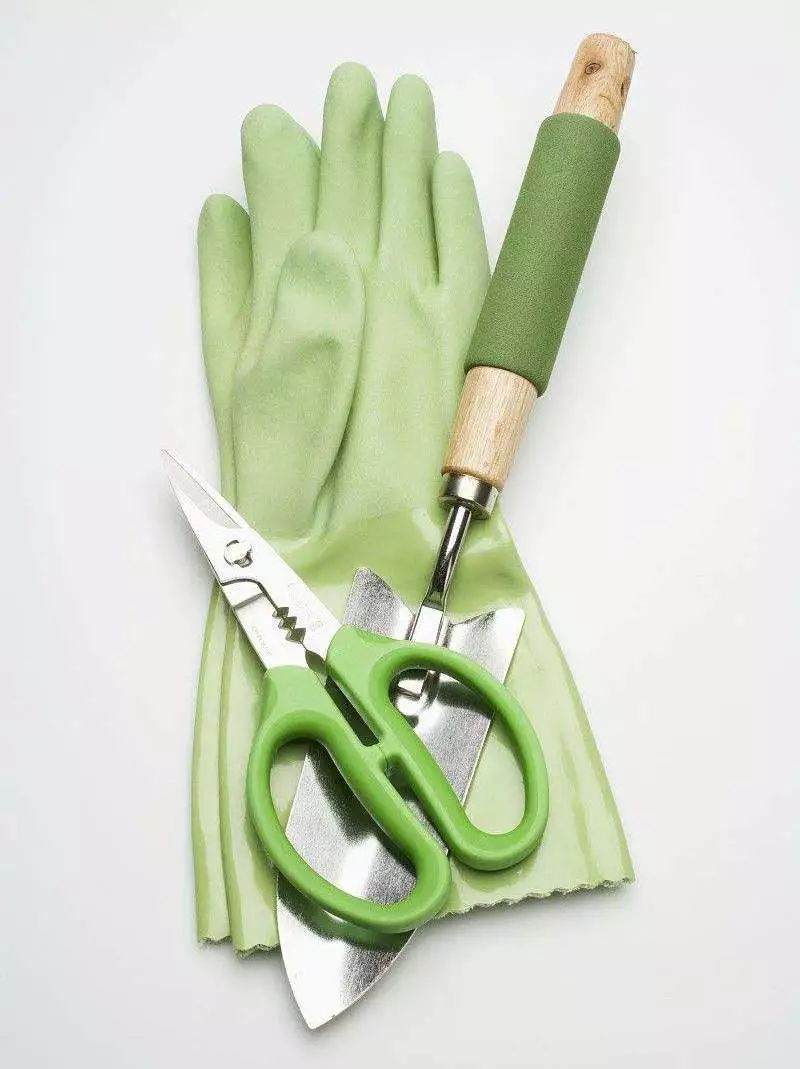
Fujimoto Tsuki
Methods and techniques for pruning and pulling
1: Status before pruning and pulling
The picture shows a miniature vine variety that does not regenerate by pulling out shoots. It is a mature plant three or four years after being potted.

Tips: The shorter new branches that grow out from the bottom usually only need to be fixed briefly, and there is no need to pull them all back. But the plants selected here are already quite messy, so they need to be unfixed and pulled back.
2. Cut off dead branches
Prune away unwanted branches first.
You can trim while unpinning, which is easier than trimming everything and then unpinning it.
If you find dead branches, cut them off entirely from the base.
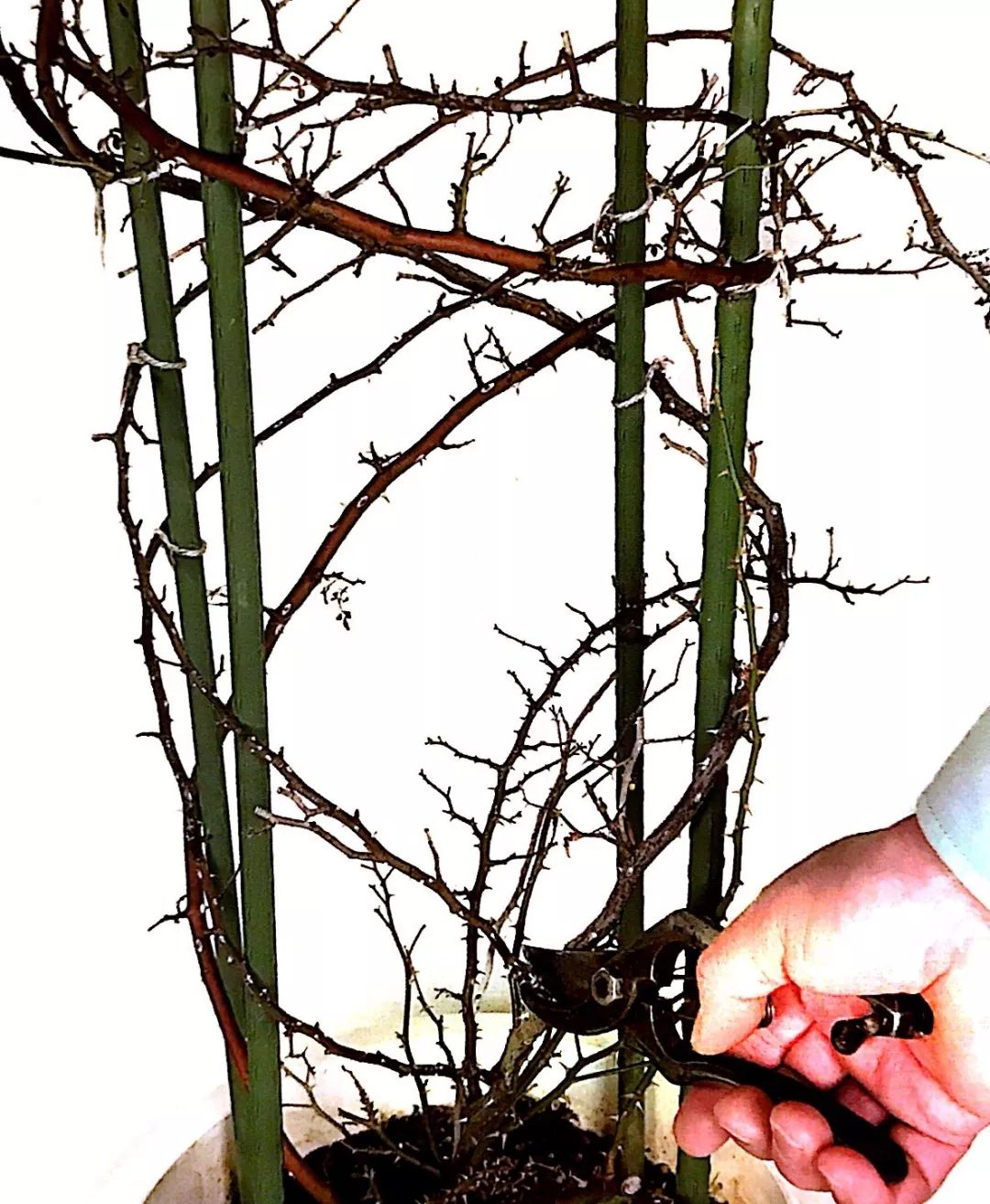
3. Prune weak branches
Cut off branches that have been infested by pests and diseases, branches that look obviously thin and weak, branches that are too short, etc.
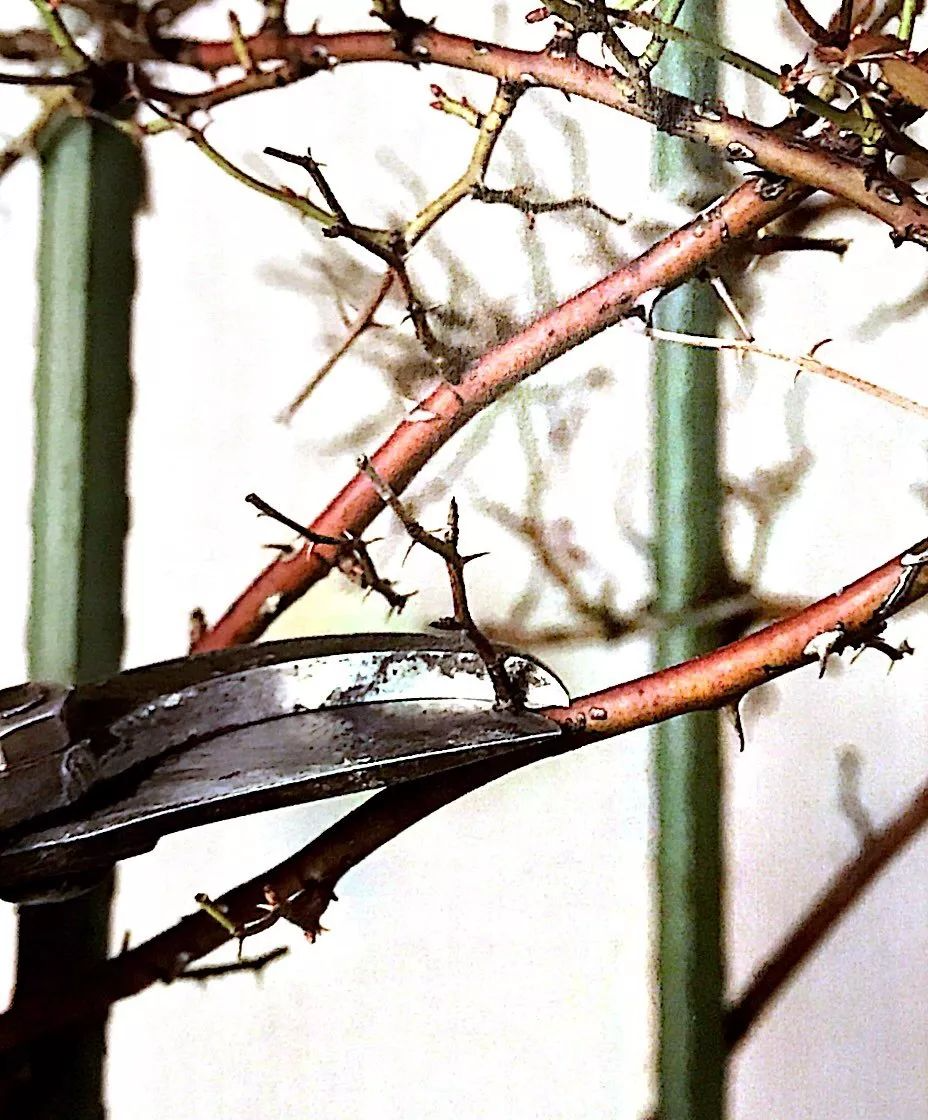
Four: Complete branch arrangement
The process of arranging the branches has been basically completed and the fixings have been released.
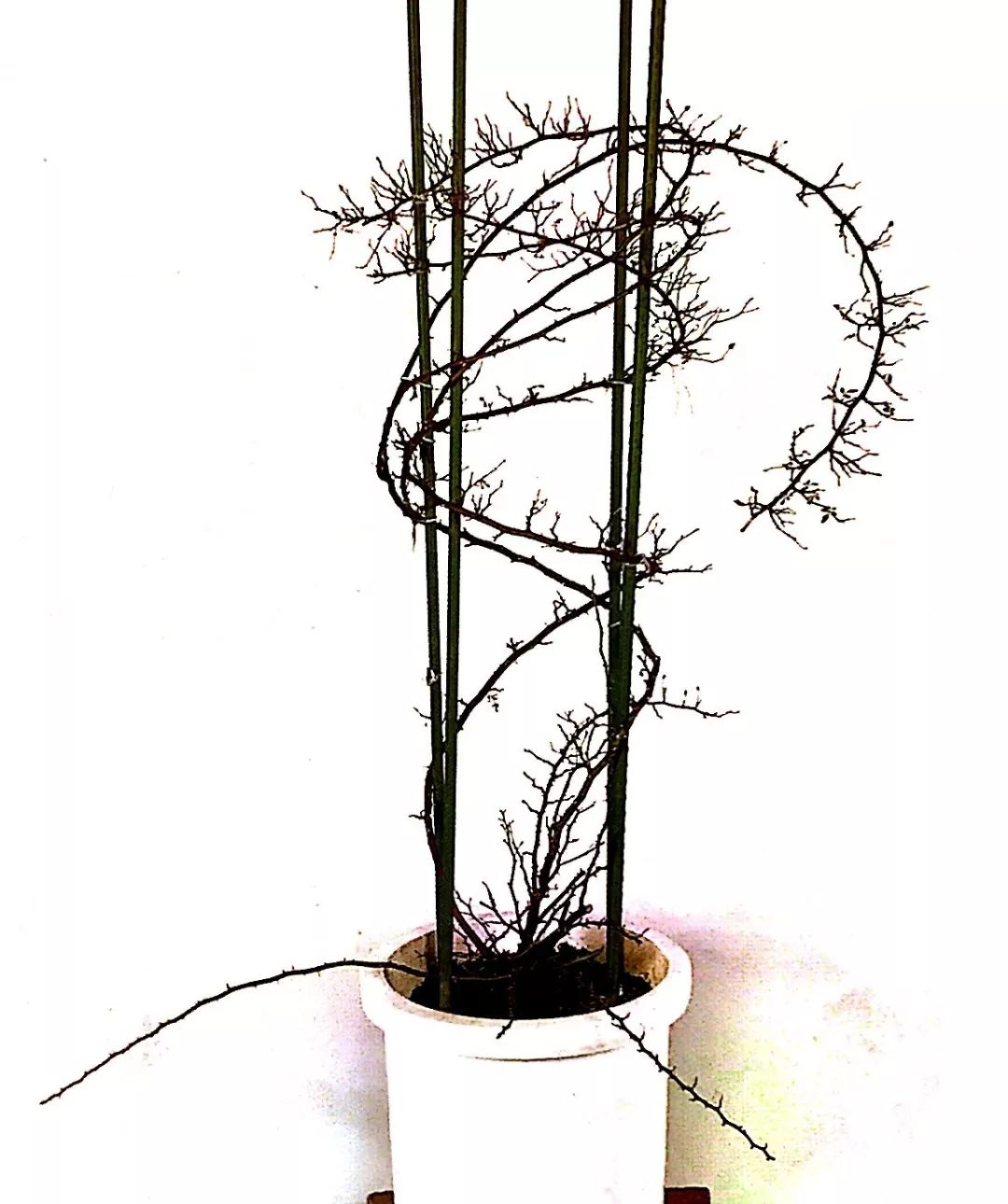
5. Pulling the first branch
Wrap the longest, strongest branch in a spiral upwards, securing it with twine from the bottom. The direction of the spiral can be the same as before or the opposite.
In order to prevent the wind from blowing the branches and damaging the buds on the branches, you need to wrap the rope twice to tie it firmly. As for the tightness of the winding, it can be determined according to personal preference.
But for branches tied to towers or fences, if they are tied too loosely, they may appear loose and untidy. Some varieties may also sway unsteadily if they are tied too loosely, which is not conducive to the growth of flower buds.
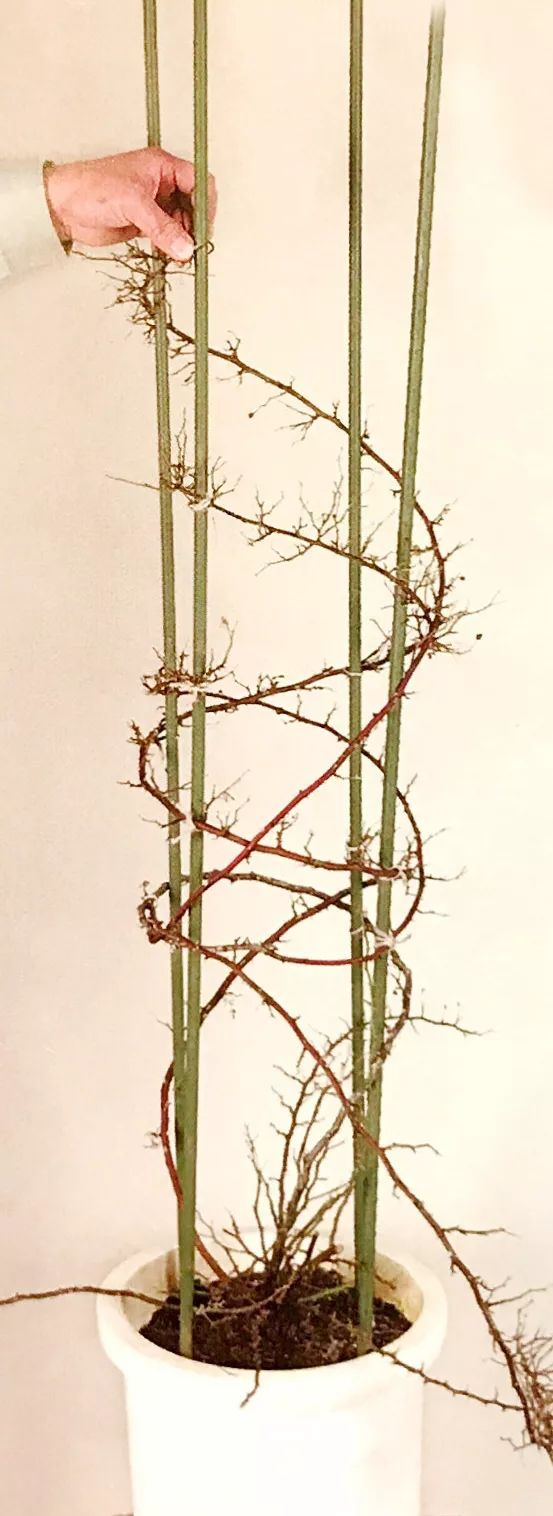
Lu: Keep short branches
Roses usually bloom in the upper part and less at the bottom, so you can fix them in the empty position at the bottom instead of cutting off the short branches.
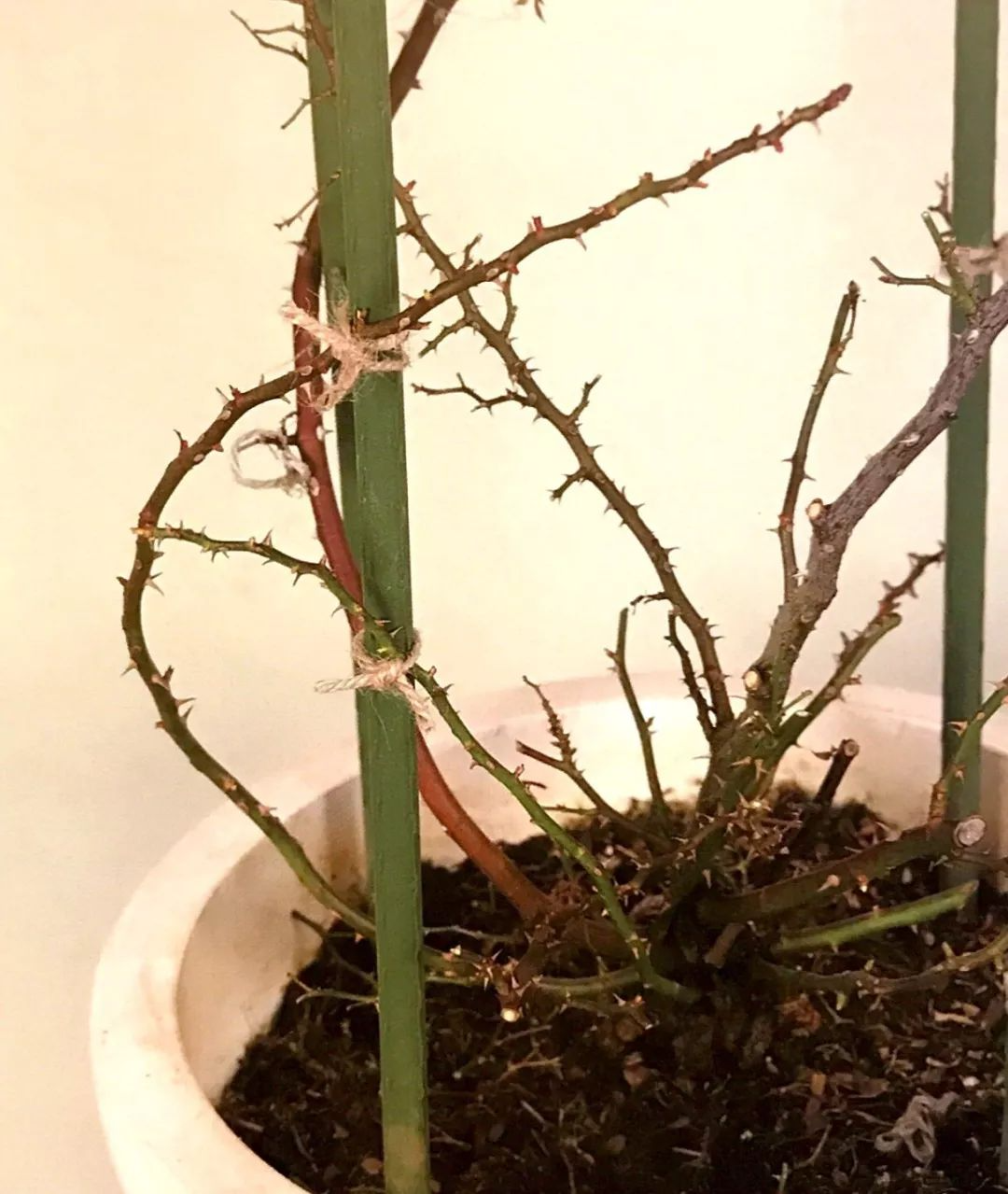
Seven: Pulling the second branch
Pull the second branch along the empty space and secure it with a rope.
The reference spacing between branches is: about 10 cm for large-flowered plants and about 5 cm for small-flowered plants.
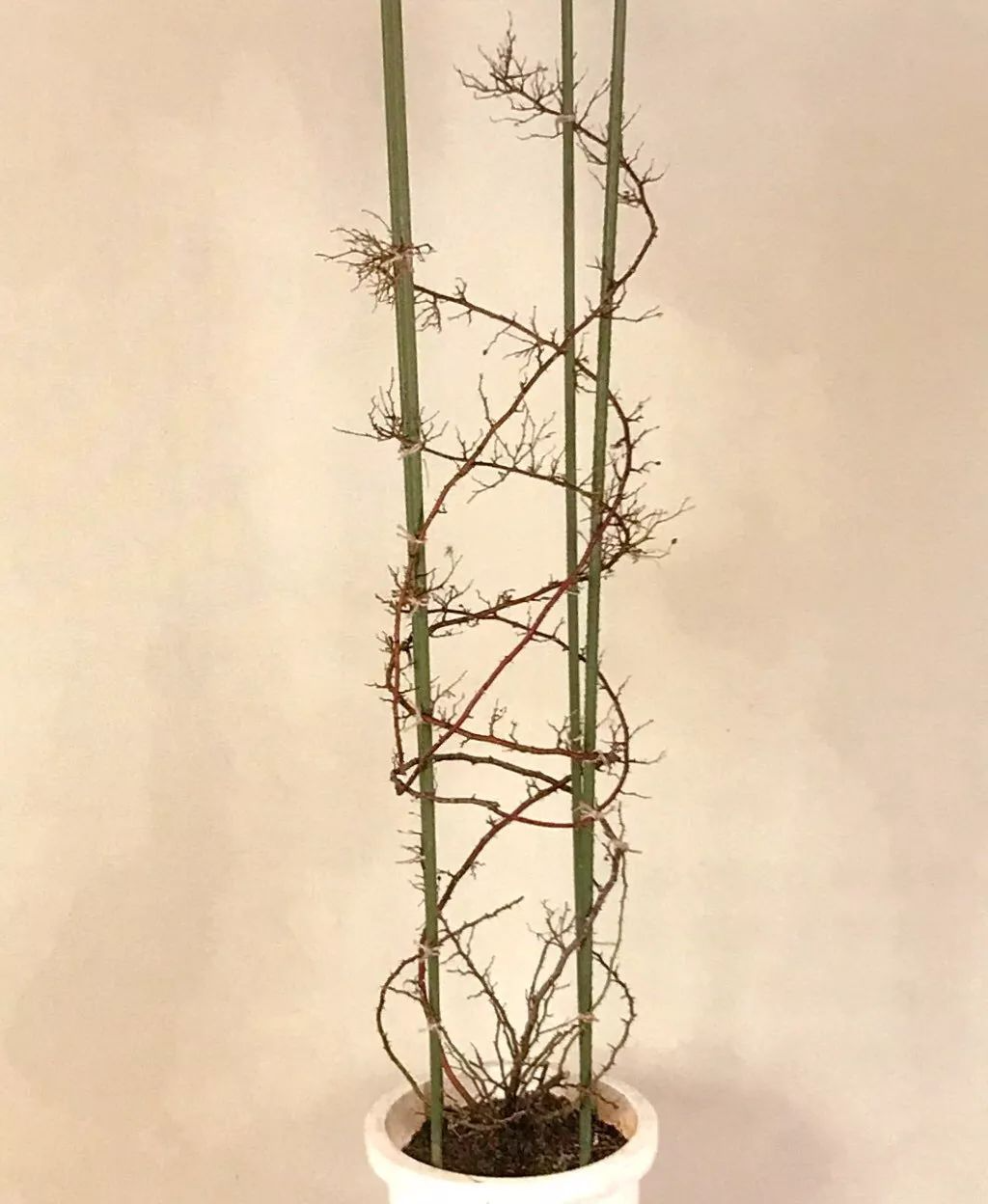
8. Pruning branches
Cut off all branches that flowered the previous year after leaving two or three buds.
For the varieties introduced here, it is equivalent to leaving 1~2cm branches and then cutting them off.
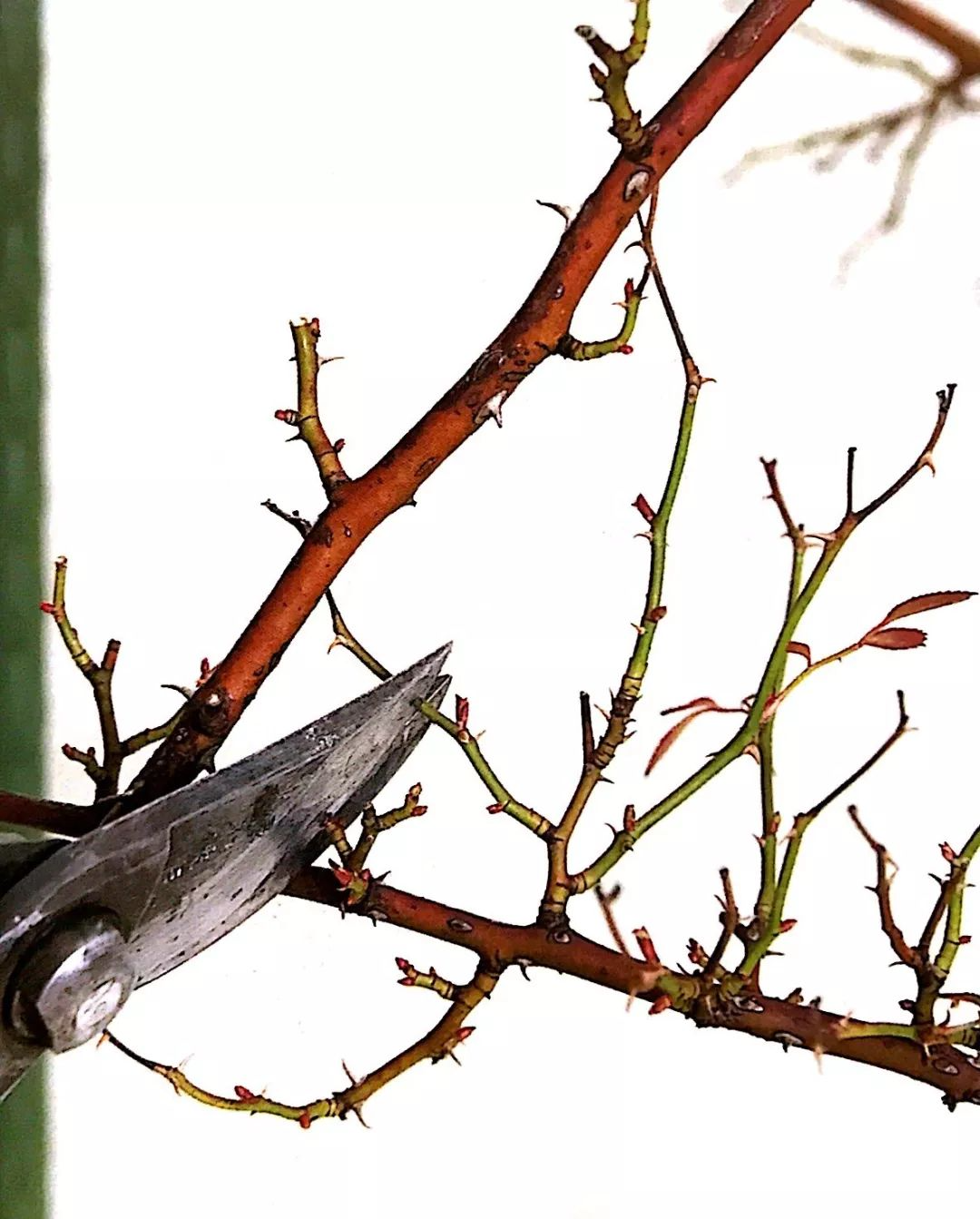
Master’s Tip: Let’s compare the before and after pruning pictures.
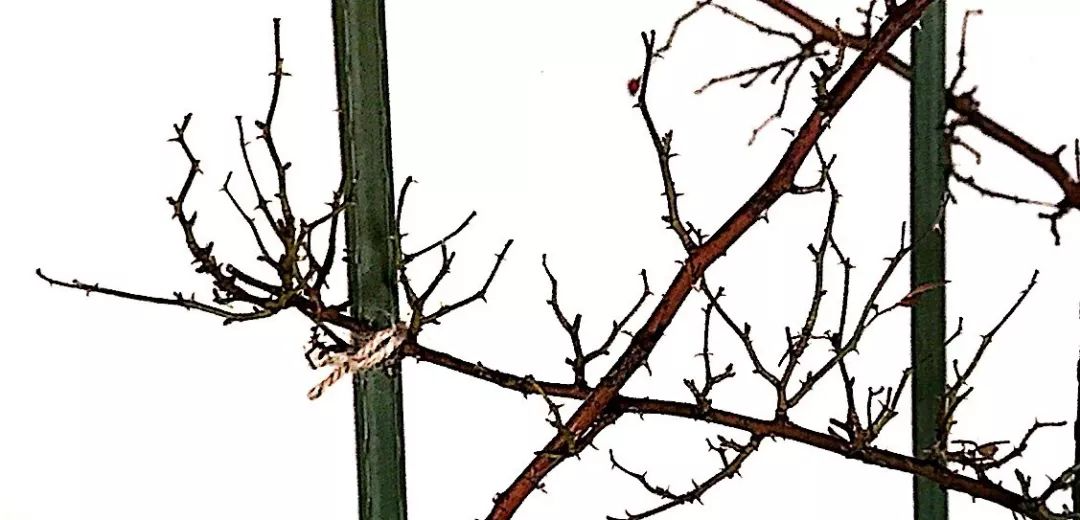
A partial enlargement of the flower branch pruning, where you can see the state before pruning.
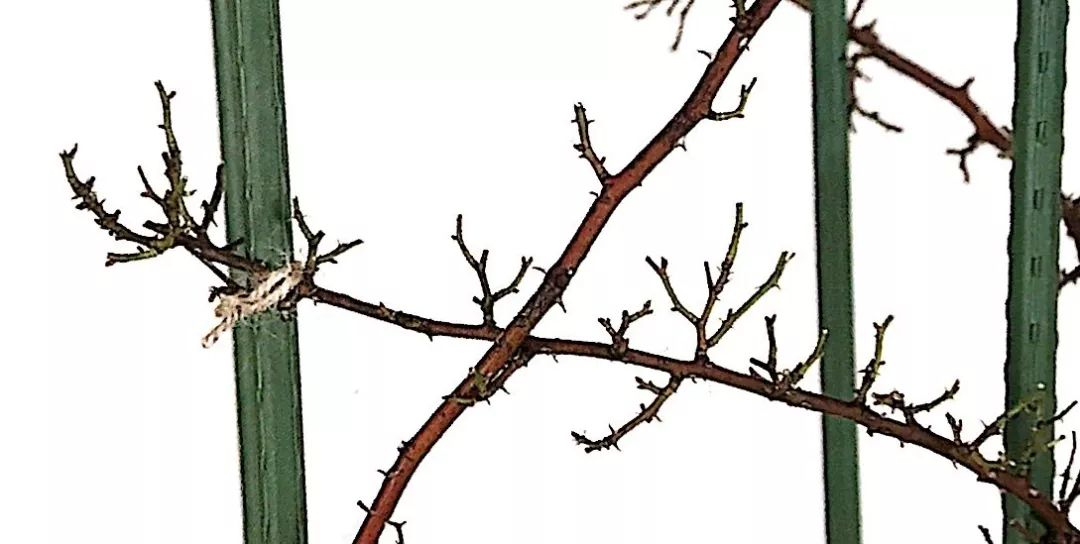
When pruning is completed, you can see that all the branches have been cut short.
9: Complete pruning and traction
The picture shows the state of pruning and pulling. It will surely bloom with gorgeous flowers in spring.
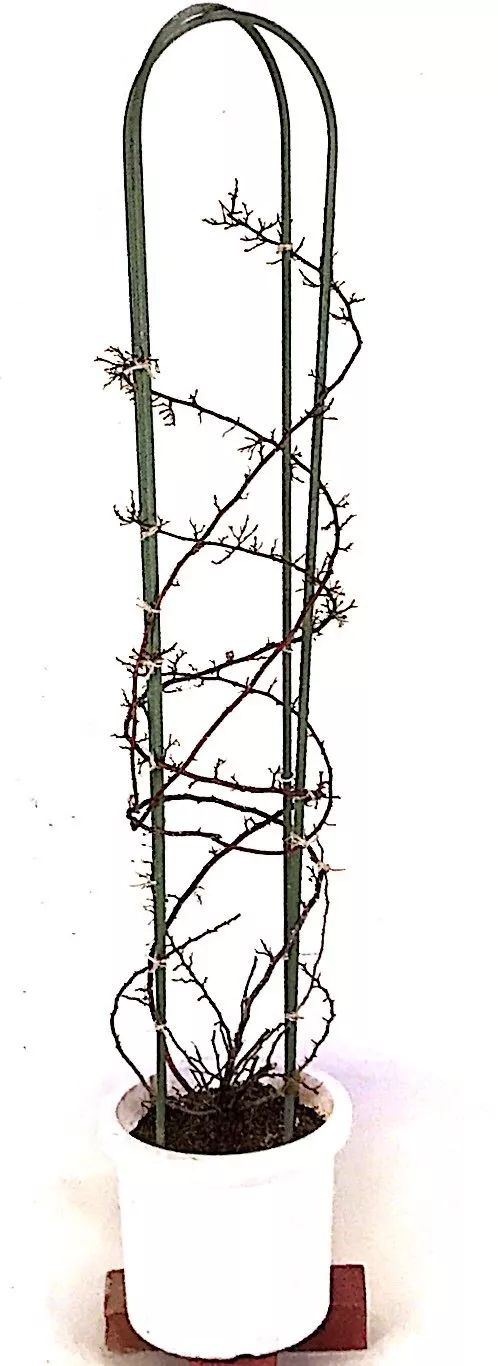
Master's Tip: For varieties that do not renew by pulling out branches in May of the following year, and whose branches become thicker every year, there is no need to pull them out again afterwards. Just tie the short branches that grow to suitable spaces.
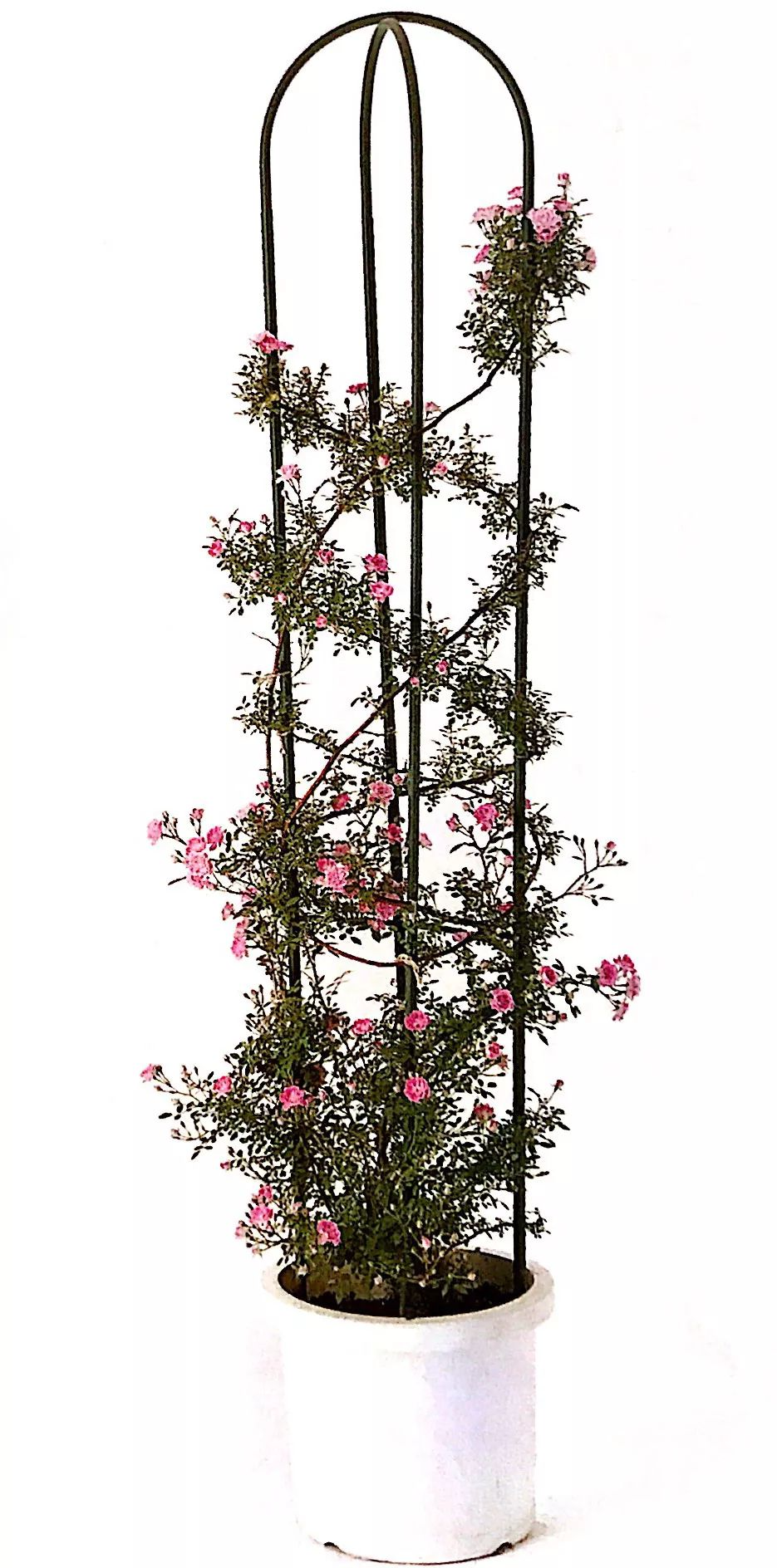
After the trimming and traction are completed, please stay tuned.
Good things always come to those who are willing to believe in them!
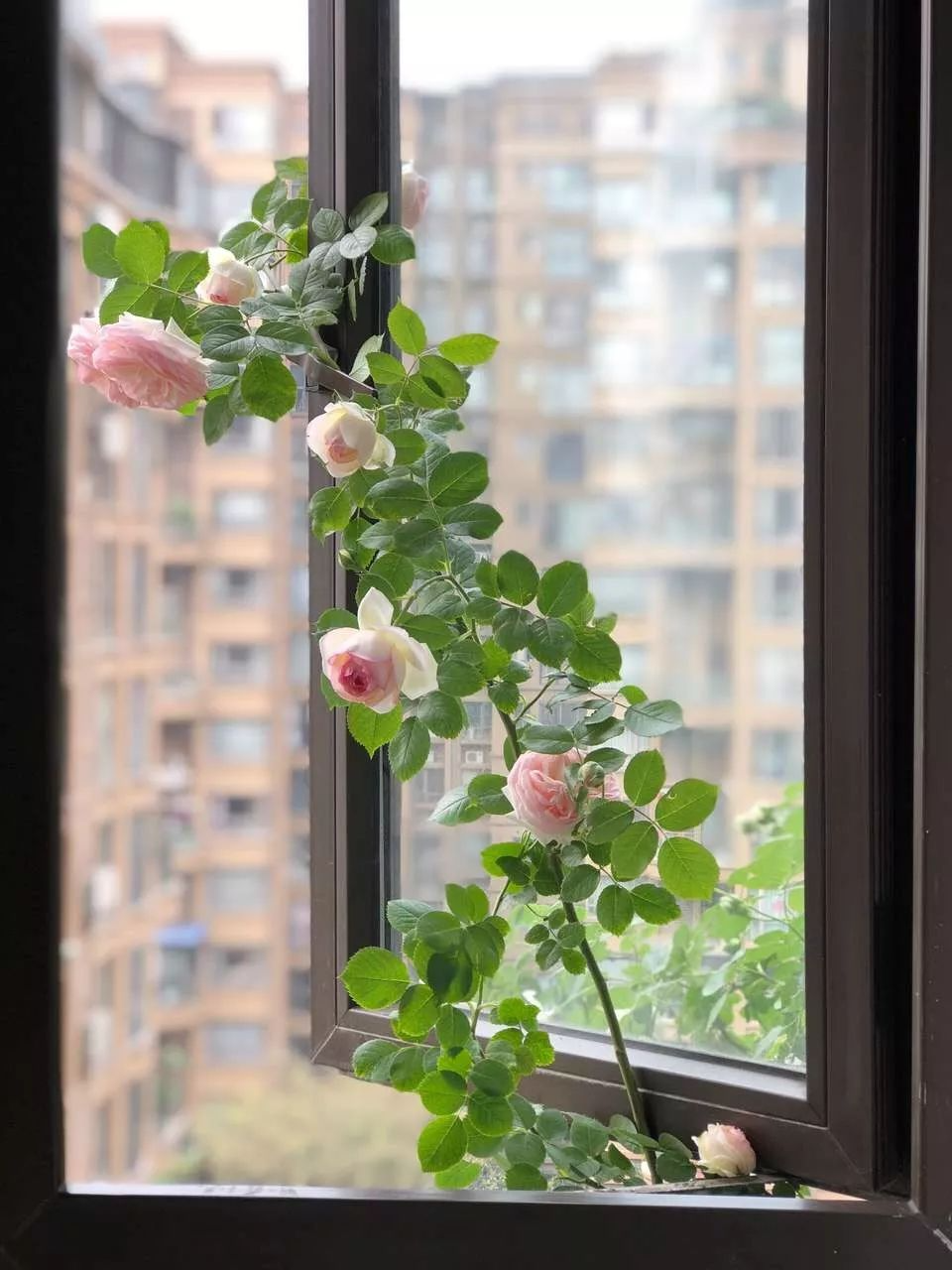
[How to grow roses in balcony pots] series
In order to allow friends who like roses and are interested in growing roses to have a 720-degree all-round understanding and mastery of how to plant roses and how to make roses bloom, the director has released the [How to Grow Balcony Potted Roses] series catalog in advance and edited it to be displayed at the end of the article for everyone to choose and read.
1. How should we plan to grow roses in balcony pots according to the changing weather conditions of the four seasons?
2. Spring rose cultivation: When the weather is warm and the flowers are blooming, it is time to prepare new seedlings.
3. If you want roses to bloom in spring, you have to learn how to pick buds for roses.
4. When growing roses in summer, the sooner you cut off the remaining flowers, the more likely it is that the next crop of buds will grow.
5. Raise roses in summer, create outstanding main branches, and learn to deal with the root of roses
6. How to grow roses in summer: How to prune roses of various types in summer
7. Growing roses in summer, daily care of balcony potted roses
8. Growing roses in autumn and winter: Notes on potting bare-root seedlings of upright varieties
9. How to grow roses in autumn and winter: tips for potting long-branched vine seedlings
10. Growing roses in autumn and winter, winding and pulling the branches of vine varieties
11. Growing roses in autumn and winter, pruning and pulling of mature vine varieties
12. Raising roses in autumn and winter, how to prune roses of various branches in winter
13. When growing roses in autumn and winter, change the soil for your balcony potted roses!
14. Growing roses in autumn and winter, daily care of balcony potted roses
15. We will try our best to help you solve the seven difficult problems that most rose lovers have in caring for roses.
Do you like the series [How to grow roses in balcony pots] ?
